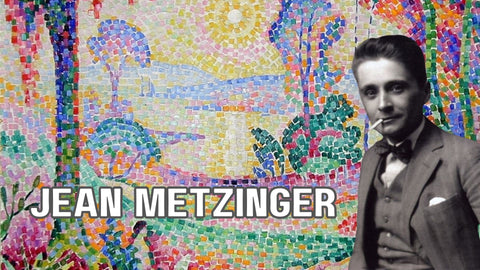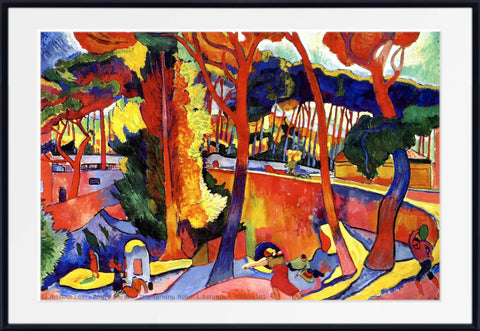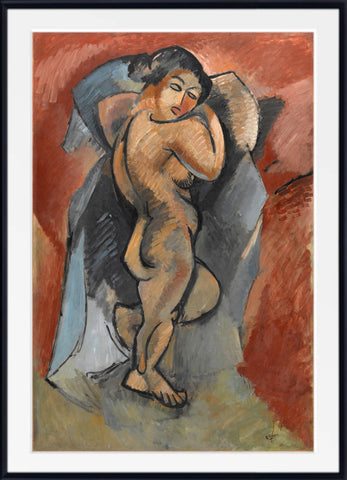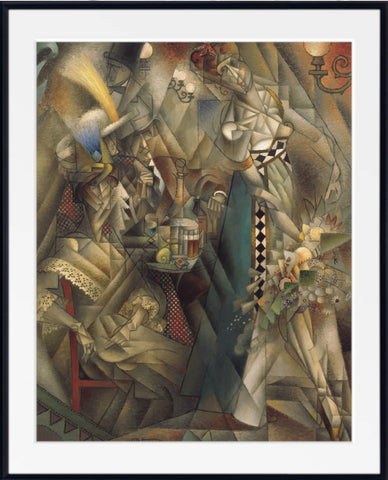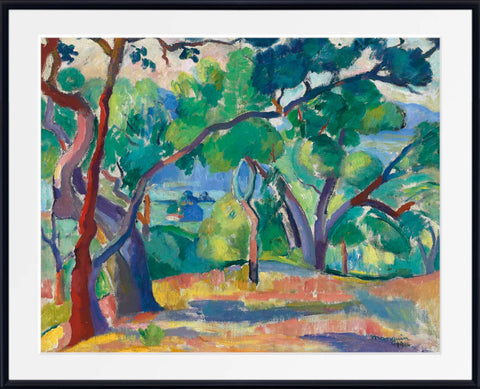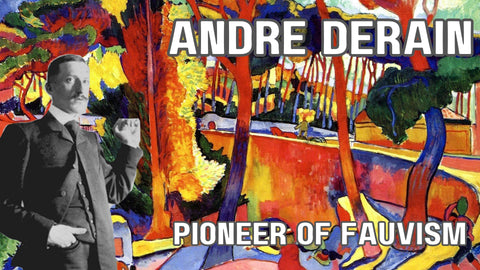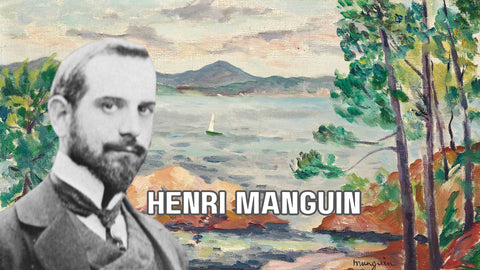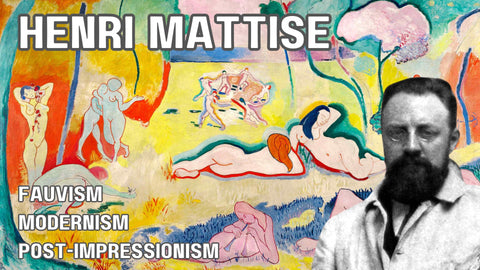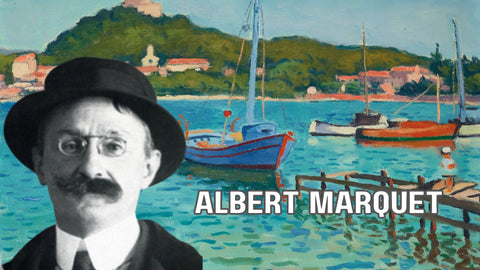Table of Contents:[hide]
Fauvism, a revolutionary art movement that emerged in France at the dawn of the 20th century, remains a captivating subject of exploration for art enthusiasts and scholars alike. Characterized by vibrant colors, bold brushwork, and a departure from traditional representational norms, Fauvism heralded a new era in artistic expression.
Origins and Influences
At the heart of Fauvism lay a rebellion against the constraints of Impressionism and a quest for artistic freedom. Artists like Henri Matisse and André Derain, along with their contemporaries, sought to break free from the confines of realistic representation and explore the emotive power of color.
The movement drew inspiration from various sources, including the works of Post-Impressionists like Vincent van Gogh and Paul Cézanne, as well as non-Western art forms such as African sculpture. These influences, combined with a newfound appreciation for the expressive potential of pure color, fueled the Fauves' creative endeavors.
Fauvism - The Artists
1. Henri Matisse
Henri Matisse, a luminary in the world of art, left an indelible mark on the landscape of modern painting. Born on December 31, 1869, in Le Cateau-Cambrésis, France, Matisse's journey from a law student to one of the most influential artists of the 20th century is a testament to his dedication and vision.
2. André Derain
André Derain, a name resonant with innovation and artistic prowess, stands tall among the pioneers of the Fauvist movement. Born on June 10, 1880, in Chatou, France, Derain's journey from his early years to his lasting impact on the art world is a captivating tale of creativity, experimentation, and evolution.
3. Georges Braque
Art has a unique power: it can challenge perceptions, break boundaries, and revolutionize the way we view the world. One artist who epitomized this transformative ability was Georges Braque, a visionary Cubist painter whose work reshaped the art landscape in the early 20th century.
4. Albert Marquet
Albert Marquet, a prominent figure in the world of French painting, left an indelible mark on the art scene of the early 20th century. From his association with the Fauve movement to his later transition into a more naturalistic style, Marquet's journey as an artist is a fascinating exploration of color, light, and perspective.
5. Jean Metzinger
Metzinger's journey commenced in the vibrant hues of neo-Impressionism, drawing influence from luminaries like Georges Seurat and Henri-Edmond Cross. Transitioning through Divisionism and Fauvism, he embraced Cubism in 1908, becoming both a trailblazing artist and a pioneering theorist.
6. Henri Manguin
Henri Manguin, a prominent figure in the Fauvist movement, left an indelible mark on the art world with his vibrant and expressive paintings. In this blog post, we delve into the life and work of this French painter, shedding light on his influences, artistic style, and lasting legacy.
The Fauve Aesthetic
What set the Fauves apart was their fearless approach to color and form. Their paintings featured vibrant hues applied with seemingly wild abandon, creating works that pulsated with energy and emotion. Subjects were simplified and abstracted, allowing color to take center stage and evoke visceral reactions from viewers.
One of the movement's most iconic works, Henri Matisse's "Woman with a Hat," epitomizes the Fauve aesthetic with its bold use of color and dynamic brushwork. The painting, initially met with both acclaim and controversy, serves as a testament to the Fauves' commitment to pushing the boundaries of artistic expression.
Exhibitions and Legacy
Fauvism gained recognition through a series of influential exhibitions, including the Salon d'Automne of 1905 and the Salon des Indépendants of 1906. These showcases introduced audiences to the radical visions of the Fauve artists, challenging conventional notions of beauty and artistry.
While the movement itself was relatively short-lived, its impact was profound. The Fauves paved the way for subsequent artistic developments, influencing movements such as Cubism and Expressionism. Their legacy lives on in the vibrant colors and uninhibited brushwork that continue to inspire artists to this day.
Conclusion
In conclusion, Fauvism stands as a testament to the transformative power of art. Through their bold experimentation and unapologetic use of color, the Fauve artists revolutionized the artistic landscape of their time and left an indelible mark on the history of art. As we continue to explore and celebrate their contributions, we are reminded of the enduring power of creativity to challenge, inspire, and transcend boundaries.
Fauvism FAQ's
-
What is Fauvism? Fauvism is an art movement that emerged in France at the beginning of the 20th century, characterized by bold colors, simplified forms, and dynamic brushwork.
-
What does the term "Fauvism" mean? "Fauvism" is derived from the French word "fauves," meaning "wild beasts," which was coined by art critic Louis Vauxcelles to describe the unconventional and vibrant style of the movement's artists.
-
Who were the key artists associated with Fauvism? The leaders of the Fauvist movement were Henri Matisse and André Derain. Other notable artists included Maurice de Vlaminck, Raoul Dufy, Kees van Dongen, and Georges Braque.
-
What were the main characteristics of Fauvist paintings? Fauvist paintings were characterized by bold and vivid colors, simplified and distorted forms, expressive brushwork, and a departure from traditional perspective and representation.
-
What were the influences on Fauvism? Fauvism drew inspiration from various sources, including Post-Impressionism (particularly the works of Vincent van Gogh and Paul Cézanne), non-Western art forms such as African sculpture, and the expressive potential of pure color.
-
When did Fauvism emerge, and how long did it last? Fauvism emerged around 1904 and continued until approximately 1908. Although the movement itself lasted only a few years, its impact on the development of modern art was significant.
-
What were the reactions to Fauvist paintings at the time? Fauvist paintings initially met with mixed reactions from critics and the public. Some praised the artists' boldness and innovation, while others criticized their departure from traditional artistic conventions.
-
How did Fauvism influence other art movements? Fauvism paved the way for subsequent artistic movements, including Cubism and Expressionism. Its emphasis on color and form inspired artists to explore new avenues of expression and representation.
-
Are there any notable Fauvist artworks? Yes, some of the most iconic Fauvist artworks include Henri Matisse's "Woman with a Hat," André Derain's "Charing Cross Bridge," and Maurice de Vlaminck's "The River Seine at Chatou."
-
What is the legacy of Fauvism in the art world today? Fauvism remains a celebrated and influential movement in the history of art. Its bold use of color, expressive brushwork, and rejection of traditional norms continue to inspire artists and art enthusiasts around the world.
Related Articles
Andre Derain - Pioneer of Fauvism
Henri Manguin - Fauvist Master
Henri Matisse - Pioneer of Fauvism
